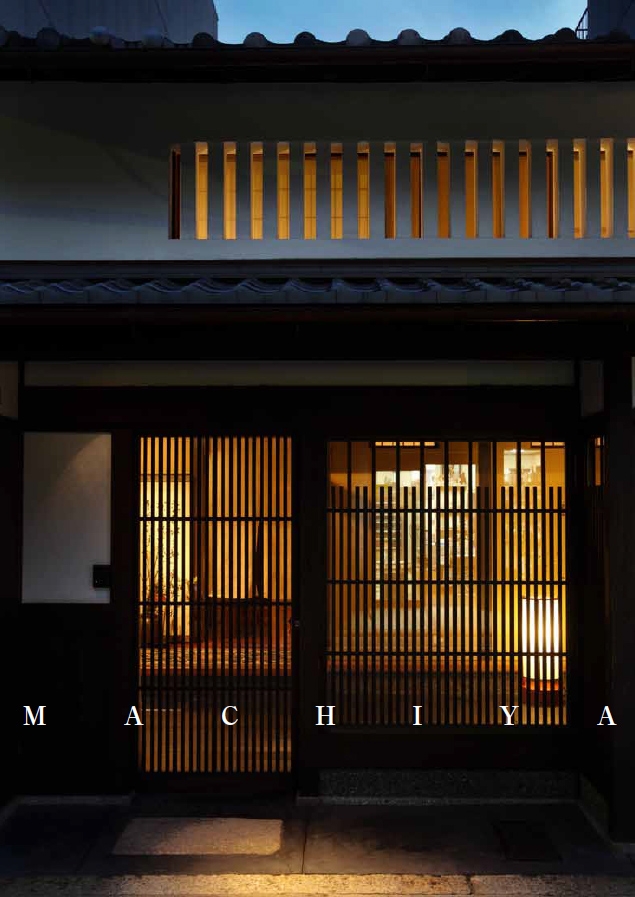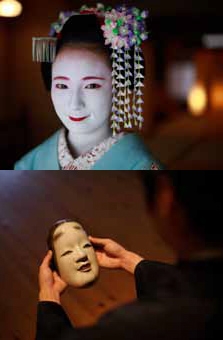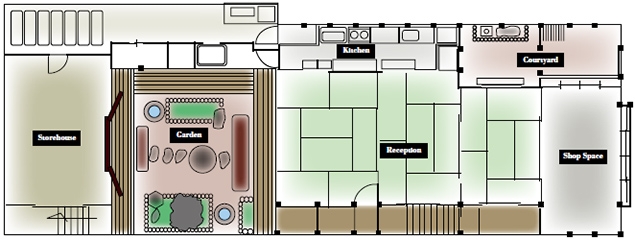Experiencing Machiya


Kyoto has a history spanning 1200 years.
Since time immemorial, it has nurtured a mesmerizing breadth and depth of tradition and culture. To touch upon the heart and soul of Kyoto, it is best to immerse yourself in the traditional lifestyle. We suggest a leisurely stay in a machiya townhouse, the dwellings built many years ago for the common townspeople, in order to explore and appreciate the hidden charm of the city. It will unlock the door to a realm of travel.
Lecture by Professor Yoshifumi Muneta
Four key questions and answers that will help you develop a deeper understanding of kyo-machiya townhouses
In 1864, many houses in Kyoto were destroyed by a fire caused by the Hamaguri Rebellion. The construction of the workplace-cum-dwelling townhouses known today as machiya began shortly afterward. The wooden architecture provides a special nostalgic atmosphere to the city’s landscape. Even today, the remnants that epitomize the way of living as practiced by the original inhabitants and their wisdom and innovative spirits abound. To help you understand the true charm of machiya architecture, we asked Professor Yoshifumi Muneta, a machiya expert and researcher advocating machiya restoration efforts, to answer four key questions.Typical Machiya Layout

What is the reason for the narrow front and deep rear of the machiya structure?
Even today, however, some neighborhood associations assess community activity charges scaled to the width of the frontage. The shape of the land had added design benefits, like allowing residents to build a workshop, storehouse or garden filled with trees and plants in the rear to suit their tastes.
What is it like to live in a machiya?
However, the real character of machiya housing lies in traditional elements, like the ambience only mature wooden houses can emanate, and the tsuboniwa miniscule garden, which conveys changing seasons and the fresh smell of well-trimmed trees and plants. Even today, many residents alter interior elements of the house, such as sliding doors and fixtures, twice a year to match and supplement the summer and winter ambiance. Meticulous preparation is also required to set up the interior of machiya for monthly events and annual festivals like Gion Matsuri, but machiya owners also know that the joy of welcoming guests to their freshly decorated houses is immeasurable. Kyoto natives take exceptionally good care of their kimonos and other belongings because they are essential to a lifestyle firmly anchored on the traditional seasonal rituals and customs of the city.
What are the special features of the machiya structure?
Is it true that machiya houses are disappearing?

Professor Yoshifumi Muneta
Born in 1956. B.S and M.S from Hosei University (Faculty of Engineering, Major in Architecture).
Studied urban and regional planning at the Universities of Pisa and Rome. Joined the Faculty of Human Environment, Kyoto Prefectural University as Associate Professor in 1993 and promoted to full Professor in 2012. Over many years, Professor Muneta has studied revitalization planning for urban centers. Publications include Theory of Machiya Restoration (Gakugei Shuppansha).
Shedding new light on the kyo-machiya’s charm
The charm of the kyo-machiya is now appreciated by the people of Kyoto. Their rediscovery of machiya was not so much a result of conscious efforts to conserve their history, culture and traditions so much as a consequence of their growing weariness of a monotonous and unexciting urban lifestyle.It’s been almost 70 years since the end of the war, but contemporary architecture has failed to create a landscape that outshines the ambience rendered by machiya townhouses, both individually and collectively, as well as the streets surrounding them. The people who have lived in great historic urban centers around the world, like Paris and Florence, know how to appreciate the beauty of kyo-machiya, which are to them at least on an equal footing with the urban splendor of European cities, and they know how to enjoy life based on that appreciation. Machiya were first discovered by artists as attractive spaces to live and work. Young people with good taste followed suit.
The long-time residents of machiya are also re-discovering their beauty, which lies below the superficial surface.